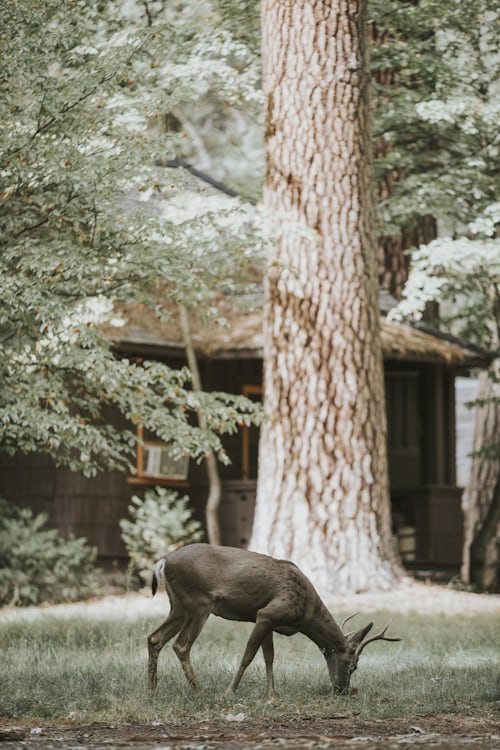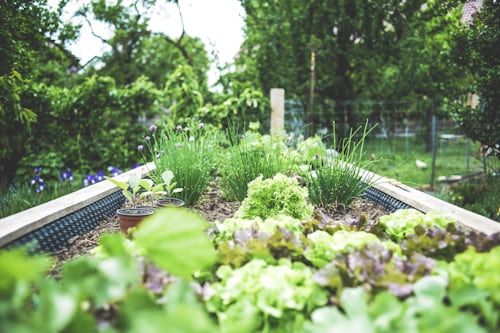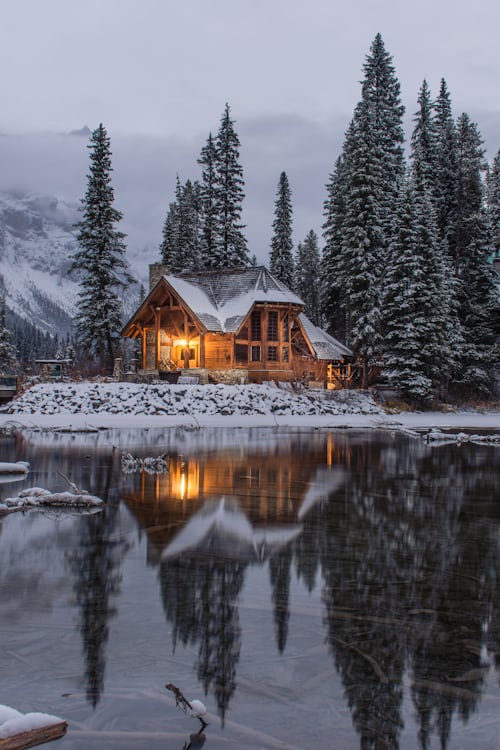What is a Bug Out Location
A bug out location is where you plan to go if you need to leave your house, or bug out. If there is an emergency, a disaster, or public uprising, your home may become unsafe, and its better to have a place to go instead of becoming a refuge. So, you throw your bug out bag on your back or in your vehicle, and you go to your safe location. A bug out location is generally remote, relatively secret, and has all the resources you need to survive and take care of yourself. Our bug out location checklist will help you determine what you need, what to avoid, and what improvements you may want to make before SHTF.
Bug Out Location Checklist
Safety from Natural Hazards
When selecting your bug out location, you want to be mindful of possible hazards. You don’t want to bug out to a flood zone, or set up in an area prone to avalanche, mud slides, flood, or get hit unawares with a forest fire.
You can actually go back and look at older satellite images with Google Earth. If you see something strange or concerning, take note. If the land is all blue 50 years ago, don’t build there, or build a houseboat.
Seclusion
The goal in bugging out is to lie low, weather the storm, and survive. The last thing you want are hostile unprepared vagabonds coming to take what you’ve got. When picking a bug out location, as the old adage says, take the road less traveled by and it’ll make all the difference.
Water Access
For survival you’ll need a reliable water source. Springs, streams, rivers, lakes, or ponds are fantastic. You may also get lucky and find a property where someone else has already drilled a well.
Trees
Trees provide a source of fire wood, lumber, and additional concealment. A lot of trees are also a good sign of life in the area. If a tree can grow, you’re also more likely to be able to find game, or grow something yourself.
Animal Life

Animals indicate that there is enough water to support life for a living creature. Deer or other big game is especially a really good sign, not just for hunting, but also for the capacity to support live stock.
Accessible
You want to be able to get to your bug out location. You want to be able to get there with the gas in your tank, or with as much fuel a you have stored.
Buildable
There are 2 aspects to what makes a place buildable. There are zoning and building codes you’ll need to be aware of that can be road blocks in building on your bug out location, or the landscape could make it extremely difficult to build.
Neighbors
Identify potential neighbors and try to get an idea of what they’re like, how close they are, and how self sufficient they are. OnX is a great tool for seeing who owns what around you, and occasionally has contact information as well. It’s also just a great mapping and planning tool for property owners and making a bug out plan.

Natural Resources
Not every place will have iron or deposits or a gold mine, but keep an eye out for edibles, like morels, pine nuts, or wild strawberries or raspberries. Look for rock deposits, herbs, and clay. Check the soil. You generally need a chemical test to know the exact quality, but you can get a decent idea by turning over a shovel full of dirt.
Cost
Cost is a factor. You want to own your bug out location free and clear. The last thing you want is a lender coming to try to kick you off your bug out location as SHTF is winding down, or even in the middle of it. That wouldn’t be pleasant for either of you, and I try to limit the amount of visitors to my bug out location.
Weather
If you’ve chosen a place in the mountains, can you get there in a snow storm? What about if the roads are muddy? Growing season varies with altitude and weather as well, so be aware of that. Make sure, if this is the case for you, that you put a green house on your list of bug out location improvements checklist.
Bug Out Location Improvements Checklist:
Once you’ve selected your bug out location, its time to start making improvements, and below is our checklist of improvements you should make to your property. How you prioritize this list will depend on your bug out location and what area it is most lacking in.
A water well at your bug out location
Having a water well drilled, and your water tested, is the very first improvement I would make to a bug out location property. You can live in a tent while you’re building a cabin, or a house, or even a shack, but if you don’t have water, you’re either dead, or spending a lot of time toting and purifying water.
Hire a company to drill you a professional well, then have the water tested. I always prefer to have some sort of filtration system in place as well, but if you can determine that your water is safe, additional precautions can be added down the line. We recommend that you have a hand pump that you can use as well hopefully an electric pump to bring you water into or near your bug out location shelter.

Trees
As mentioned above, trees bring in animal life, provide firewood, and can help conceal your location. If you’d like fruit trees, you’ll need to get those planted as soon as possible so they have a chance to grow. If they’re too small to produce much fruit, you won’t be able to count on them for much sustenance. You may also want to plant other trees for firewood, lumber, or other resources in your bug out location. The goal is to be self sustainable, so start planting.
Garden

We also recommend that you put in a garden at your bug out location. Along with fruit trees, we recommend putting in as many plants as possible that can grow all on their own. We like to put in raspberries, blackberries, blueberries, and strawberries. These plants are relatively self sufficient, though that will depend on your location, elevation, and climate. Get one started though. If it fails, you’ll have learned more about what you need to do to make it succeed. It’s best to fail and learn when your life doesn’t survive on your bug out location garden.
I’d also recommend putting in a green house, or at least getting one framed in. You can always wrap it later with plastic wrap if you don’t have time to finish it properly, but a greenhouse will protect your plants from the weather, and from the local wildlife.
A Cabin

If you’ve got a good shelter, your bug out location can be “move in ready.” A cabin or a house of some sort can get you out of the wind and rain, and can provide a secure place to store your preps. Do you want to know something absolutely crazy? You can actually buy a cabin kit on Amazon, and some have surprisingly good reviews.
Fencing around your bug out location
If you own the property, fence the boundary. Fencing the boundary of your bug out location property will help keep unwanted strangers out, as well as getting your property more livestock ready.
Firewood
A simple thing you can do is start a firewood pile at your bug out location, and having a supply of fuel will mark something off your to do checklist. DO NOT cut the firewood from your bug out location, other than clearing land for other use. Get the firewood elsewhere so you can retain your natural resources in your bug out location.
Sheds
Nobody ever complained about having too much storage space. You could use a trapping shed, a food storage shed, a shed for water storage, a shed for fuel storage, etc. If you can’t afford a cabin, or are otherwise restricted by local building codes, you can probably put a shed on site and use that as a bunk house. Sheds are simple and versatile, and you can almost never have too many at your bug out location.
Coal
Along with having a good firewood pile, I also would personally love to have a big old pile of coal that I’ve buried at my bug out location. Nobody needs to know its there, and I would only touch it in an emergency.
Propane
Propane is quite a step up from coal. I’d get as big a tank as you’re legally allowed to have, and keep it full. Propane can last for twenty years or more and can be used for heat, for a propane fridge, or for cooking. I’d also put some additional vehicle Fuel Storage at your bug out location, especially if it’ll deplete all or most of your reserves to drive to your location.
Food Storage
Once you’ve got a cabin or a shed at your bug out location, start storing food. Start storing the staples, especially more long term items, unless you use your bug out location regularly. Secure your food in a way that not only keeps it safe from bacteria and microorganisms, but also from any wildlife in the area. I always have to be conscious of bears at my bug out location.
Water Storage
Start a water storage. If your well or water source has issues, you need to have a backup. If you don’t have a well or quick access to water, having a good water storage is even more important.
Wind Turbines and/or solar panels
Once you’ve got all your basics in place, start to look into quiet sustainable energy. Wind and solar are your best options for a bug out location
Stealth or Camouflage
If you’ve got the most glorious prepper paradise, and it stands out like a sore thumb, you’ll have people wanting your resources, and hostile or not, its not a situation you want to be in.
What You Don’t Want at Your Bug Out Location
There are many things you may want at your bug out location, but there are some things you want to avoid, and don’t want to store there at all, until you’re living there full time. Below is a checklist of things you don’t want at your bug out location.
Ammo/Weapons
We are a strong proponent of being armed in a SHTF scenario, so why don’t we have ammo or weapons on our bug out location checklist? The reason is- what if someone gets to your location first? My bug out location is a stronghold, meant to be defensible. If they have that high ground, cover, and my weapons and ammo, it’ll be hard to get them out.
The only way I’d consider leaving ammo or weapons on location would be if I buried them in waterproof containers. It’d be completely separate from anything else I’d have there.
Hostile Neighbors
Make it a point to be kind to your neighbors. A good neighbor that is looking out for you and your property while you’re not there is invaluable. Try to gain an ally if not a friend. As mentioned above, you need to know who’s close. If you’ve got multiple hostile parties around you in normal times, I don’t want to know if or how that might escalate in a SHTF scenario. Look elsewhere, buy them out if you’re able, or otherwise try to get them to leave.
Popularity
Do you know where my personal bug out location is? NO! I run a prepping website, but I go to great lengths to try to hide that sort of information. While you want to be prepared, kind, and neighborly, you don’t want to be so neighborly that all the neighbors want to come over and see the cool garden you’ve been talking about. You want to generally fly under the radar in your bug out location.
Attention
I hate red tape, but in your bug out location, make sure you’re following all the local laws and rules. You don’t want to be the cool kid on the mountain, but you also don’t want to be considered the crazy person on the mountain.
Best Locations to Bug Out To

Forest
Forests are proven growing areas, which makes them great for gardening at your bug out location. Forests also generally have a good variety of wildlife, including deer and turkeys. Forest land also generally has water relatively close, which keeps the trees alive. They also have the obvious natural resource: wood, so you’ve got fuel and building materials readily available.
Mountains
Mountains are more remote than a lot of other areas, which means less company. They have their other challenges, such as differing weather and colder temperatures. The remoteness also tends to make them more wild and rugged than other bug out location options.
Small Rivers or Streams
You don’t want to go to an easily navigable water way, or you may have a lot more company than you’d like, unless you’re considering transitioning into a nomadic lifestyle in a SHTF scenario. Our personal policy is to pick a water way that cannot be easily traveled by a raft. In a SHTF scenario, we expect there may be many people who take to the river looking for resources or just looking for something better. A stream or small river can provide you with a lot of fresh water, fish, and even the means of creating electricity with a water wheel, which makes it an ideal bug out location.
Ponds
Ponds can have fish, water, and attract wildlife. We do not recommend choosing a bug out location near a lake or more popular source of water, as everyone else will be coming to these locations.
Keep Learning
Prepping is an ongoing venture. Because of this, we recommend that you subscribe to our bimonthly newsletter to keep prepping, emergency preparedness, and self reliance on your mind. We promise, we’re not spammy, which is why we only email you twice per month. We hope you think about being prepared more than twice per month, but our newsletter is a valuable resource to help you learn new things, and just to keep prepping on your mind. Right now you can also sign up for free. You can also follow our Facebook Page for regular articles and resources.

